In the early 20th century, a group of scientists and engineers in the Soviet Union attempted to reverse the course of a major river and redirect it to a new location. The project, known as the “White Sea-Baltic Canal,” involved the construction of a massive canal that would connect the White Sea in the north […]
Rhea Clyman, a Jewish Canadian Journalist…
Rhea Clyman, a Jewish Canadian Journalist, travelled to the Soviet Union and made reports on the Siberian labor camps and the Holodomor. This led to her deportation in 1933 after which she reported on Nazi Germany until 1938 when she was forced to flee due to growing anti Semitism.
The post Rhea Clyman, a Jewish Canadian Journalist… appeared first on Crazy Facts.
The collapse of the Soviet…
The collapse of the Soviet Union directly correlated with the resurgence of Cuba’s amazing coral reef. Without Russian supplied synthetic fertilizers and ag practices, Cubans were forced to depend on organic farming. This led to less chemical runoff in the oceans.
The post The collapse of the Soviet… appeared first on Crazy Facts.
After the breakup of the Soviet Union…
After the breakup of the Soviet Union, Lithuania could not afford to send its men’s basketball team to the 1992 Olympics, so the Grateful Dead sent the team colorful, free-flowing tie-dye warm-up jerseys with a flying, dunking skeleton, and the team took the bronze medal.
Check out the Gorgeous Subways of the Former Soviet Union
I visited Russia for ten days in 2003, and it was truly a once-in-a-lifetime experience. Standing in Red Square, walking around Saint Petersburg, it was truly incredible.
One thing I noticed was how elaborate and beautiful some of the subway stations were in Moscow and Saint Petersburg. The Soviets built incredible subway and train stations (some of them very far below ground). During the peak years in the Soviet Union, only 30 out of 1,000 citizens owned cars, so it was imperative to have a top-notch subway public transit system.
Even the more modern stations are pretty breathtaking. It’s a matter of priorities.
Here are some of the best.
1. Chernaya Rechka (Black River), Saint Petersburg.
2. Look at the detail.
3. Narvskaya Station, Saint Petersburg.
4. Avtovo Station, Saint Petersburg.
5. A newer station in Moscow.
6. Elektrozavodskaya Station, Moscow.
7. Taganskaya Station, Moscow.
8. Avtovo Station, Saint Petersburg.
9. Cold and lonely walkway.
10. A grand station in Moscow.
11. A station in Yekaterinburg.
12. Nizhny Novgorod. Futuristic.
13. Art in Saint Petersburg.
14. Mayakovskaya Station, Moscow.
15. They are beautiful, indeed.
Have you been to Russia and visited some of the train stations?
Share your favorite with us in the comments!
The post Check out the Gorgeous Subways of the Former Soviet Union appeared first on UberFacts.
10 Facts About Chernobyl That Will Give You the Creeps
A devastating nuclear disaster took place at the Chernobyl Nuclear Power Plant in the Soviet Union on April 26, 1986. The incident is back in the public consciousness right now due to the success of the HBO show Chernobyl that dramatizes the events surrounding the accident.
Much of what happened before, during, and after the 1986 event is still the cause of much debate due to the secrecy of the Soviet Union. But one thing is for sure: the Chernobyl accident is considered the worst nuclear power plant disaster in history.
Here are 10 facts about the terrifying Chernobyl disaster and its aftermath.
1. Casualty rate: Unknown
The number of victims that can be blamed on the accident ranges anywhere from 4,000 to 90,000. Two people died in the initial blast, 29 people died from radiation sickness in the months after the accident, and there are literally thousands that may die from radiation-related causes in the future.
2. A gruesome death
One of the first firefighters who responded to the accident scene was Vasily Ignatenko. He suffered a terrible two-week death from his exposure to radiation, including excreting blood and mucus 25 times a day and coughing up pieces of his own internal organs.
3. Other ailments
People in neighboring areas had to flee their homes and complained of such symptoms as “black spots,” bodies getting “fat, like a barrel,” and turning “black, like coal, and shrinking.”
4. Radiophobia
Because women were terrified of possible radiation poisoning, there were an estimated 100,000-200,000 abortions in Europe after the Chernobyl disaster.
5. Dead trees everywhere
The area around the nuclear power plant became known as The Red Forest because the trees died and turned a ginger color after the accident.
6. Lingerers
Although it’s illegal to live in the area around the plant known as the Zone of Alienation, or the Exclusion Zone, it’s estimated that 130-150 people still live there, many of them older women taking care of their family’s land.
7. Poor animals
If you’ve seen the show, you know that people were not allowed to evacuate with their pets. This actually happened and units were sent in to put the animals down.
8. But…there are still hundreds of dogs there
Descendants of the dogs who survived the aftermath of the disaster still live in the Exclusion Zone. There are an estimated 300 stray dogs here. You can help them out by donating HERE.
9. Tourist spot
Tourists can visit the Exclusion Zone, and it’s actually become pretty trendy after the success of the HBO show about the disaster.
10. Ghost town
There is an abandoned amusement park in nearby Pripyat that looks like something out of a horror film.
While it’s truly terrifying what happened at Chernobyl, the strength that the people of Russia have shown in the face of unimaginable devastation should be commended.
The post 10 Facts About Chernobyl That Will Give You the Creeps appeared first on UberFacts.
People Are Flocking to the Site of the Chernobyl Nuclear Disaster to Post Pics on Social Media
Due to the success of the hit HBO show Chernobyl, naturally now Instagram “influencers” are descending on the site of the 1986 nuclear disaster in Ukraine (and risking their health) to have their photos taken. Seems like kind of a disrespectful place to showcase your fabulous lifestyle, doesn’t it?
The show’s creator even tweeted this message out.
It's wonderful that #ChernobylHBO has inspired a wave of tourism to the Zone of Exclusion. But yes, I've seen the photos going around.
If you visit, please remember that a terrible tragedy occurred there. Comport yourselves with respect for all who suffered and sacrificed.
— Craig Mazin (@clmazin) June 11, 2019
It kind of reminds me of this story about people taking “playful” photos at the site of the Auschwitz concentration camp.
Get a load of these photos. Very bizarre…
1. Okay, that’s weird
2. Very stylish
3. Nuclear tourism
4. Exploring the grounds
5. Radiation levels
6. Hmmmm
7. All decked out
8. A good place to work out
9. Artsy shot
10. Wow
11. True love
12. He looks satisfied
13. So odd…
14. Top of the world
15. She’s having a blast
What do you think about this phenomenon? Share your thoughts in the comments, por favor.
The post People Are Flocking to the Site of the Chernobyl Nuclear Disaster to Post Pics on Social Media appeared first on UberFacts.
Images from Chernobyl: What Remains of History’s Worst Nuclear Catastrophe
On the evening of April 25, 1986, the Ukrainian town of Chernobyl was rocked by an explosion at Chernobyl Nuclear Power Plant’s reactor number four.
That accidental explosion released over 400 times more radiation than the atomic bomb blast that devastated the city of Hiroshima, Japan during WWII.
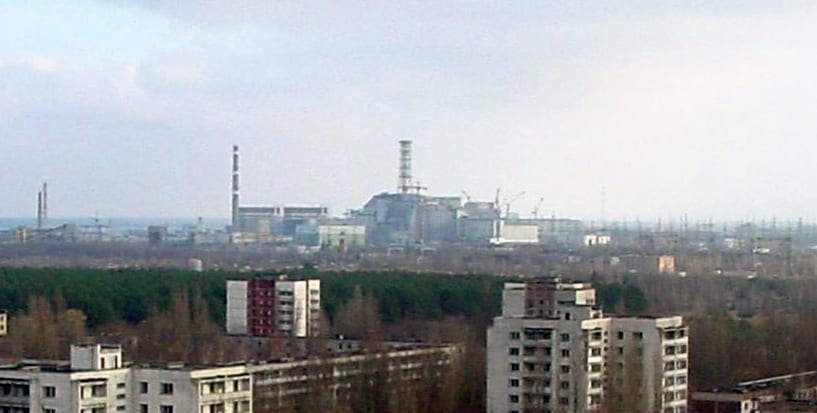
Photo Credit: Jason Minshull, Public domain
Dozens of people lost their lives and many more were hospitalized with radiation burns. Millions of people throughout Ukraine, Belarus and Russia were exposed to dangerous levels of radiation.
The power plant was reduced to rubble; the surrounding land scorched. Thousands of residents were forced to evacuate, never to return. The loss of life and health was devastating.
The images that emerged–unforgettable.
The Soviet military set up the Exclusion Zone that still exists today.
It is a roughly 18-mile circle around the plant, largely uninhabited due to the high amounts of detectable radiation. The area draws tourists curious about its history and how it looks today.
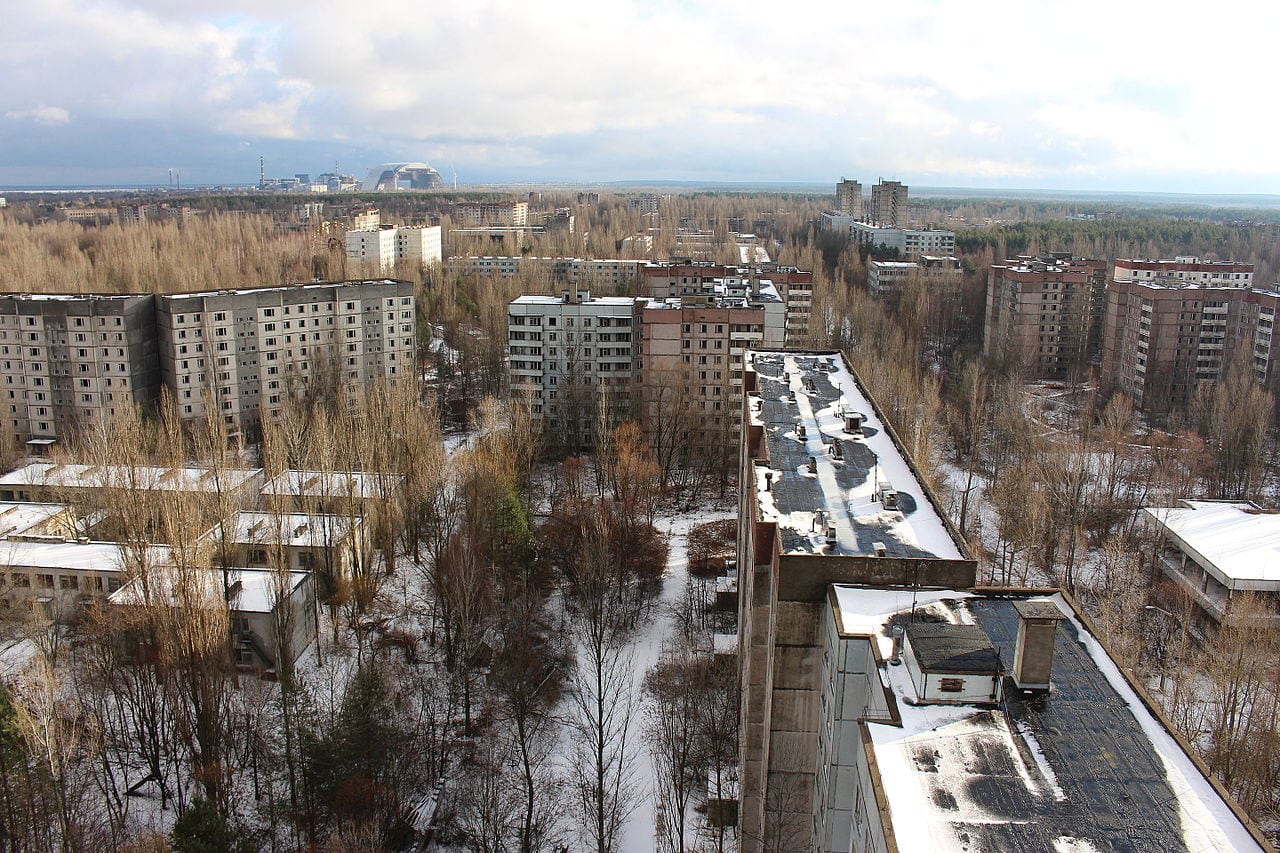
Photo Credit: Alexander Blecher, Creative Commons
The remains of the stricken reactor were covered with a “sarcophagus” or Object Shelter to prevent the further spread of radioactive material.
Another shelter on top of that called Chernobyl New Safe Confinement was installed by an international team in 2017. A monument sits in front of that.
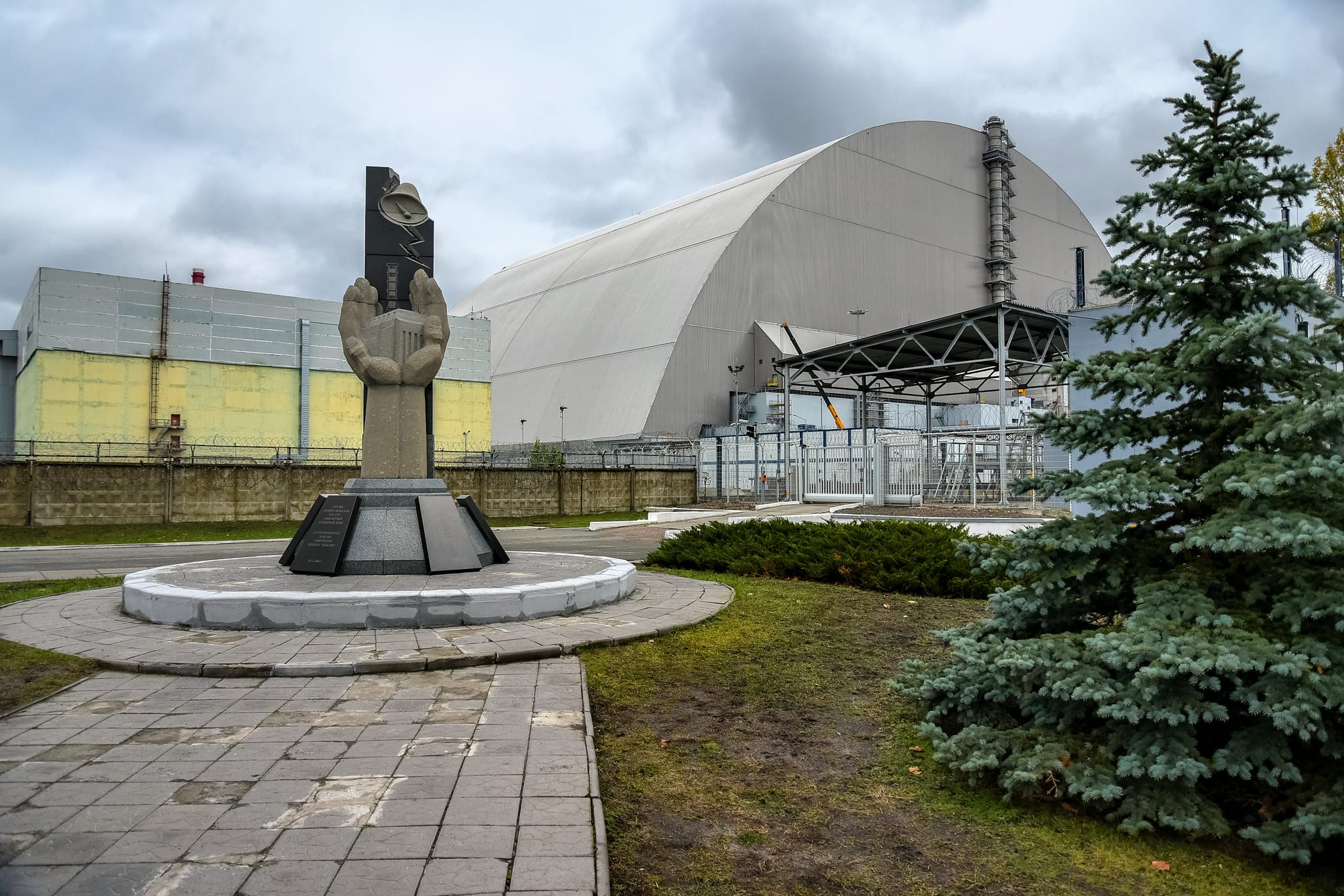
Photo Credit: Flickr
The town of Pripyat, adjacent to the Chernobyl Nuclear Power Plant, was not evacuated until almost midnight of April 26.
No one in an official capacity wanted to take responsibility for declaring the incident a disaster or call for a total evacuation of citizens. Children went to school while everyone else went about their day not knowing their town was officially radioactive.

Photo Credit: Pxhere
Opened in 1970 as the model communist village, Pripyat is deserted, although tourists and workers can visit for a few hours per day.
Before the disaster, Pripyat was a youthful city of 50,000. The average age of its residents was 26.
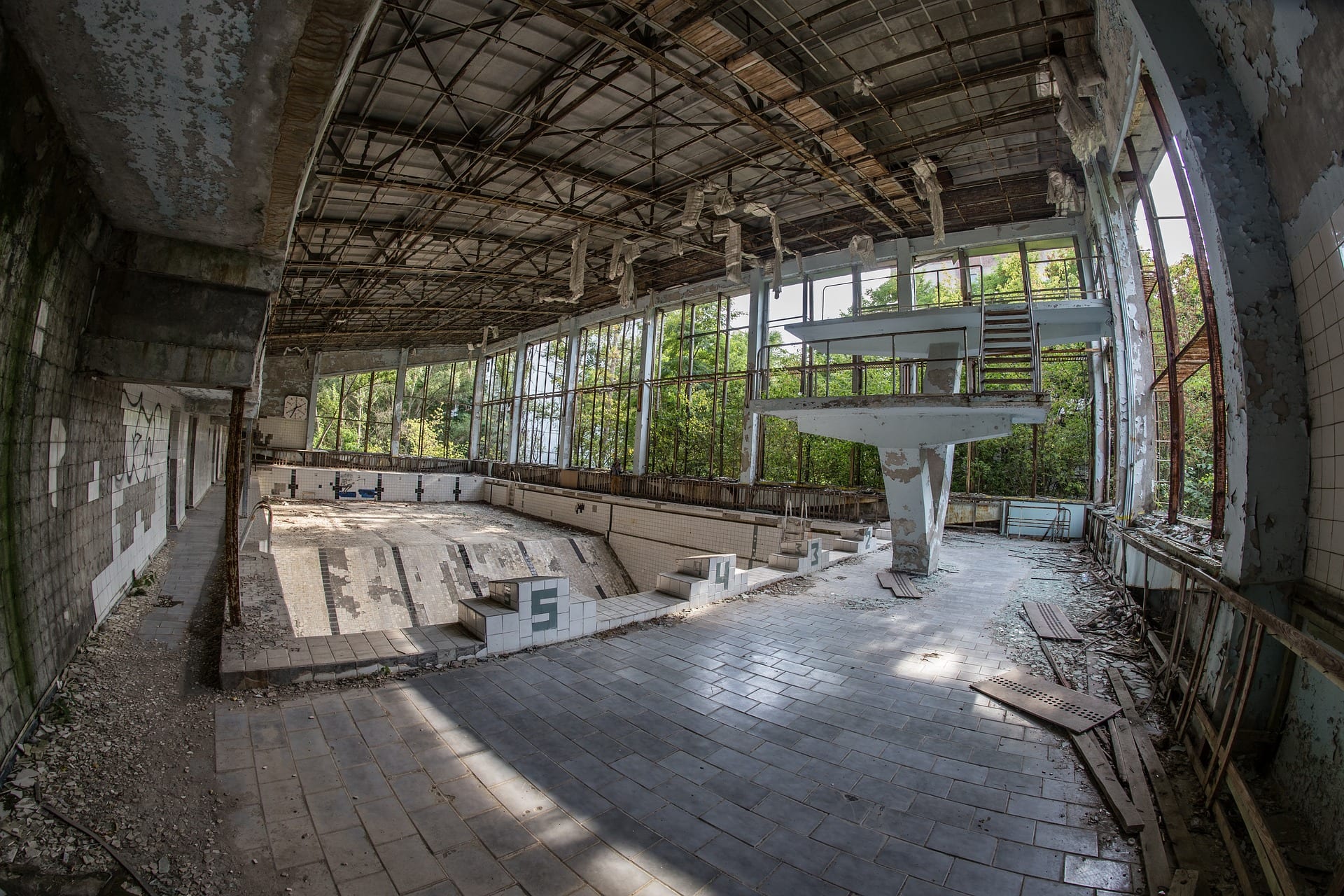
Photo Credit: Pixabay
Nature has taken over the Exclusion Zone.
With few human beings around, plants and wildlife, like bears, bison and wolves, are reclaiming the territory.
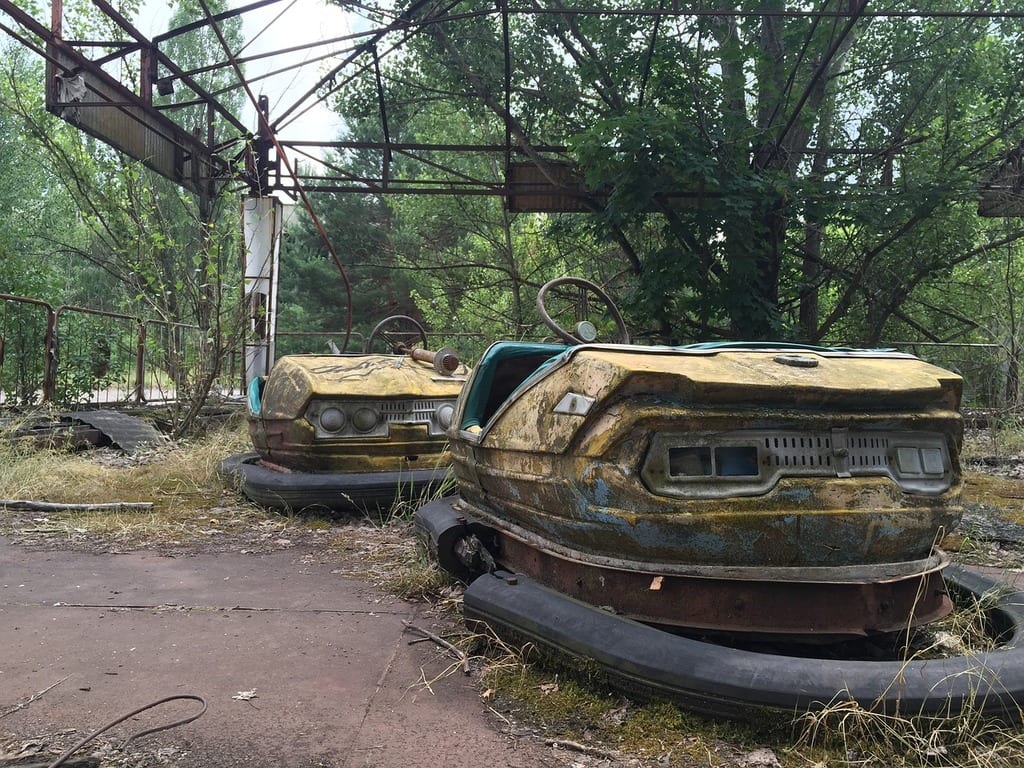
Photo Credit: Picryl
All tourists, guides and workers must get measured for radiation before leaving the Exclusion Zone.
If levels are too high, then clothes must be left behind for disposal.
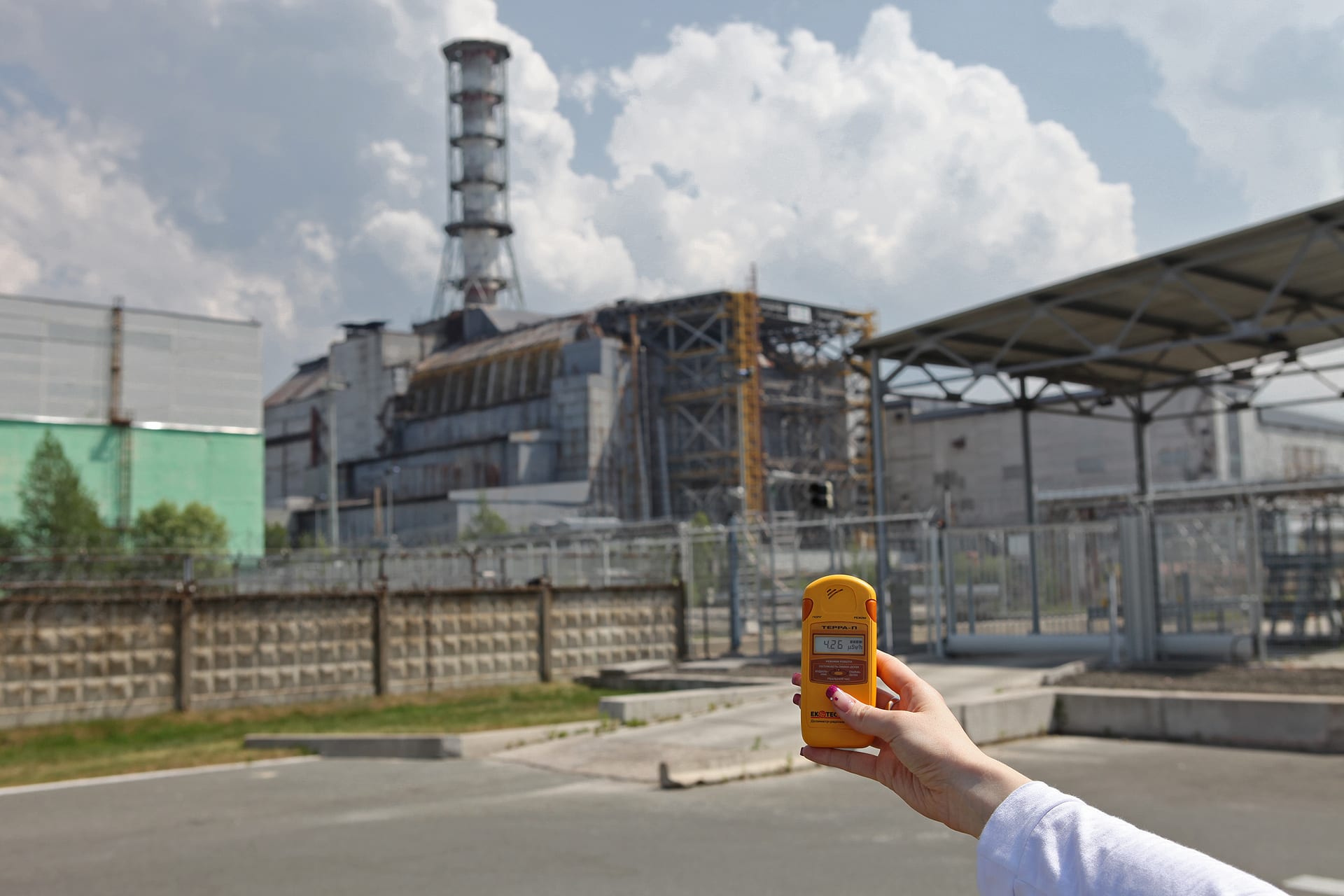
Photo Credit: Flickr
Over 600,000 responders, both civilian and military have been awarded honorary status of “Chernobyl liquidators” since the explosion.
Reservists weren’t given proper uniforms so they made their own with thick lead sheets protecting their spines and bones. Still, many suffered serious health problems–some deadly.

Photo Credit: Pexels
With permission, you can join a tour group and spend a few hours exploring pre-1991 CCCP.
See hammers and sickles, symbols of the former Soviet Union, as well as a statue of Lenin – non-existent in the rest of Ukraine.
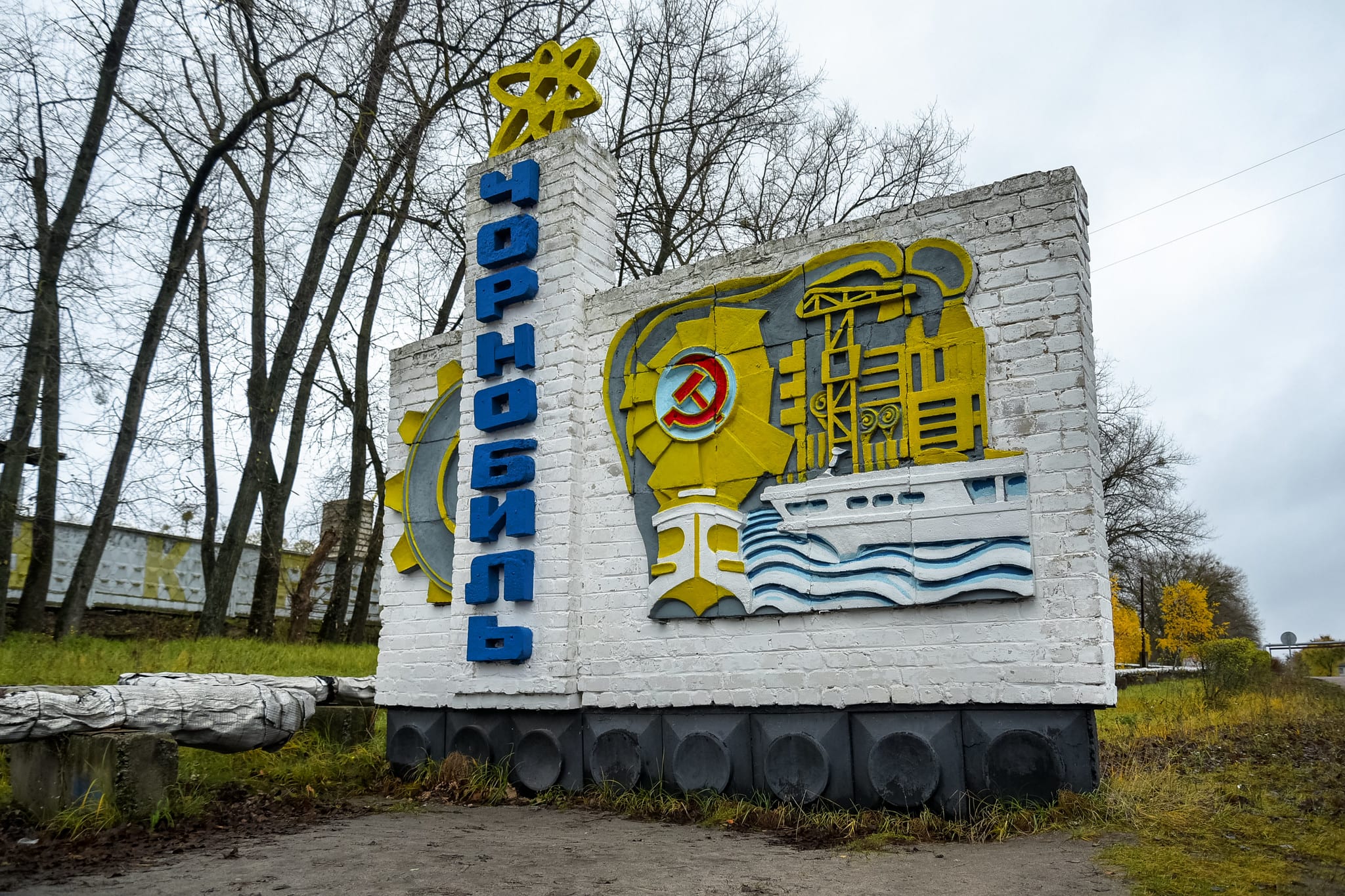
Photo Credit: Flickr
The future of this site is up in the air. It is now part of Ukraine, and the country is showing interest in using the site for dumping its own nuclear waste.
Some would like to see the area become a nature preserve for the abundant wildlife already making themselves at home.
Whatever its future, Chernobyl’s radioactivity is expected to remain at hazardous levels for the next several centuries…so humans won’t be moving back permanently any time soon.
The post Images from Chernobyl: What Remains of History’s Worst Nuclear Catastrophe appeared first on UberFacts.
A Russian immigrant to NY in the 1920s, Lillian Alling was…
A Russian immigrant to NY in the 1920s, Lillian Alling was so homesick that she resolved to walk home to Siberia. She walked an estimated 5000 miles in 3 years, serving a few months in jail for vagrancy in Canada, and was last sighted on the banks of the Bering Strait. 10
In 1986, a sysadmin looking into a $0.75 accounting error uncovered…
In 1986, a sysadmin looking into a $0.75 accounting error uncovered a KGB hacker that was stealing nuclear secrets.

 Я часто рассуждаю о том, какой я на самом деле. Принимаю ли это я решение, или навязанный стереотип быть "сильным", "становится лучше" и "преодолевать себя" заставляет делать меня то, что по настоящему мне не нужно? Например, взбираться на гору, учиться водить машину, стричься, делать физические упражнения, есть здоровую еду, не пить алкоголь. Это я или не я? Может, моё внутреннее я на самом деле хочет сесть за компьютер и погрузиться в RPG на неделю. Может настоящий я – там?
Я часто рассуждаю о том, какой я на самом деле. Принимаю ли это я решение, или навязанный стереотип быть "сильным", "становится лучше" и "преодолевать себя" заставляет делать меня то, что по настоящему мне не нужно? Например, взбираться на гору, учиться водить машину, стричься, делать физические упражнения, есть здоровую еду, не пить алкоголь. Это я или не я? Может, моё внутреннее я на самом деле хочет сесть за компьютер и погрузиться в RPG на неделю. Может настоящий я – там?  Желание построить крутой образ себя, необычного и успешного, сильного и волевого, развивающегося и успешного, часто загоняет истинные мотивы и импульсы внутрь. Я люблю находиться на природе, люблю испытания, но не меньше я люблю залипать дома и заказывать еду, чтобы смотреть фильмы. Фильмы вообще для меня дают нисколько не меньше, чем путешествия за пределы квартиры. Мне нравится анализировать их, погружаться в миры, и иногда представлять свои. Навряд ли человека, который просто смотрит кино, можно назвать успешным и развивающимся. Многие вообще видят в фильмах жвачку для мозга. Но мне плевать. Я люблю фильмы. Я настоящий раскрываюсь как зритель и переживаю этот опыт один или с кем-то.
Желание построить крутой образ себя, необычного и успешного, сильного и волевого, развивающегося и успешного, часто загоняет истинные мотивы и импульсы внутрь. Я люблю находиться на природе, люблю испытания, но не меньше я люблю залипать дома и заказывать еду, чтобы смотреть фильмы. Фильмы вообще для меня дают нисколько не меньше, чем путешествия за пределы квартиры. Мне нравится анализировать их, погружаться в миры, и иногда представлять свои. Навряд ли человека, который просто смотрит кино, можно назвать успешным и развивающимся. Многие вообще видят в фильмах жвачку для мозга. Но мне плевать. Я люблю фильмы. Я настоящий раскрываюсь как зритель и переживаю этот опыт один или с кем-то. Station. Not New york unsurprisingly. #russiansubway
Station. Not New york unsurprisingly. #russiansubway Я у станка весь день стою – Дневную норму выдаю. Мне нравится работа, Хоть мучает зевота. А после я домой тащусь – Поем, попью и спать ложусь. Зато мне будет премия, Почёт и уважение. © ⠀ #пелкопитер
Я у станка весь день стою – Дневную норму выдаю. Мне нравится работа, Хоть мучает зевота. А после я домой тащусь – Поем, попью и спать ложусь. Зато мне будет премия, Почёт и уважение. © ⠀ #пелкопитер

 . . . #taganskaya#moscow#russia#russian#russianmetro#russianunderground#russiansubway#subway#moscowunderground#moscowsubway#beauty#beautiful#amazing#colorful#blue#москва#россия#московскоеметро#таганская#красотка#красота
. . . #taganskaya#moscow#russia#russian#russianmetro#russianunderground#russiansubway#subway#moscowunderground#moscowsubway#beauty#beautiful#amazing#colorful#blue#москва#россия#московскоеметро#таганская#красотка#красота #russiansubway #avtovo #stpetersburg #russia #metro #travel
#russiansubway #avtovo #stpetersburg #russia #metro #travel #secondtripof2019 #unforgetablemoments
#secondtripof2019 #unforgetablemoments #travelgram #travelcouples #travelcouplegoals #travelphotography #winterstyles #livingitlovingit
#travelgram #travelcouples #travelcouplegoals #travelphotography #winterstyles #livingitlovingit


 My nearest underground station В период моей жизни в Англии мне пару раз доводилось общаться с моими international friends касательно темы российского метрополитена, в частности московского. Те, кому удавалось посетить столицу РФ (из полусотни наберется едва 3 студента), отмечали архитектуру станций (не всю подземку в целом) как одну из лучших. Кстати наша британская подруга Андреа тоже под впечатлением. Действительно, большинство станций московского метро выглядят как картинные галереи. Если будете в Москве, обязательно прогуляйтесь по самым, по-моему мнению, прекрасным галереям московской подземки: – Комсомольска (кольцевая); – Киевская (кольцевая и Арбатско-Покровская линия); – Новослободская; – Таганская; – Парк Культуры (кольцевая) и другие. Кстати станции Лондонского метро не особо впечатляющие, хотя некоторые – в стиле Hi-Tech. Именно такой стиль мне нравится больше. Станций Екатеринбургского метрополитена не много, но каждая из них стилизована под конкретную тематику. Например Чкаловская – в честь советского летчика Валерия Чкалова (в честь него названы район города и одна из улиц). А Ботаническая (на фото выше) в стиле пчелиных сот. Кстати она мне нравится больше всех. #метро #underground #ботаническая #русскоеметро #yekaterinburg #history #fact #russiansubway #russiantube #россия #therussianfederation
My nearest underground station В период моей жизни в Англии мне пару раз доводилось общаться с моими international friends касательно темы российского метрополитена, в частности московского. Те, кому удавалось посетить столицу РФ (из полусотни наберется едва 3 студента), отмечали архитектуру станций (не всю подземку в целом) как одну из лучших. Кстати наша британская подруга Андреа тоже под впечатлением. Действительно, большинство станций московского метро выглядят как картинные галереи. Если будете в Москве, обязательно прогуляйтесь по самым, по-моему мнению, прекрасным галереям московской подземки: – Комсомольска (кольцевая); – Киевская (кольцевая и Арбатско-Покровская линия); – Новослободская; – Таганская; – Парк Культуры (кольцевая) и другие. Кстати станции Лондонского метро не особо впечатляющие, хотя некоторые – в стиле Hi-Tech. Именно такой стиль мне нравится больше. Станций Екатеринбургского метрополитена не много, но каждая из них стилизована под конкретную тематику. Например Чкаловская – в честь советского летчика Валерия Чкалова (в честь него названы район города и одна из улиц). А Ботаническая (на фото выше) в стиле пчелиных сот. Кстати она мне нравится больше всех. #метро #underground #ботаническая #русскоеметро #yekaterinburg #history #fact #russiansubway #russiantube #россия #therussianfederation The first message about the accident at the Chernobyl nuclear power plant appeared in the Soviet media on April 27, 36 hours after the disaster. ⠀
The first message about the accident at the Chernobyl nuclear power plant appeared in the Soviet media on April 27, 36 hours after the disaster. ⠀  CHERNOBYL INSIDER
CHERNOBYL INSIDER Such spectacular views can be seen on our tours. ⠀
Such spectacular views can be seen on our tours. ⠀ 

 . . . . . #chernobyl #visitkyiv #ukraine #travelinspiration #pripyat #solotravellers #wanderrach #easterneurope #travelgirls #travellergram
. . . . . #chernobyl #visitkyiv #ukraine #travelinspiration #pripyat #solotravellers #wanderrach #easterneurope #travelgirls #travellergram
 ALTERNATIVE JEWELRY
ALTERNATIVE JEWELRY Diesen Ort zu betreten, die Geschichten und Handlungen, die sich vor 33 Jahren dort abgespielt haben, in Gedanken vor sich zu sehen und zu wissen wie sehr sie ganze Welt beeinflusst haben, ist etwas das man nicht in Worte fassen kann… Ein Ort, der an Faszination aber auch an tiefer Betroffenheit kaum zu übertreffen ist
Diesen Ort zu betreten, die Geschichten und Handlungen, die sich vor 33 Jahren dort abgespielt haben, in Gedanken vor sich zu sehen und zu wissen wie sehr sie ganze Welt beeinflusst haben, ist etwas das man nicht in Worte fassen kann… Ein Ort, der an Faszination aber auch an tiefer Betroffenheit kaum zu übertreffen ist  Повреждение атомов клеток. Процесс воздействия радиации на организм называется облучением. Это крайне разрушительная сила, которая трансформирует клетки, деформирует их ДНК, приводит к мутациям и генетическим повреждениям. Деструктивный процесс может запустить всего одна частица радиации. Действие ионизирующего излучения специалисты сравнивают со снежным комом. Начинается все с малого, затем процесс нарастает до тех пор, пока не наступят необратимые изменения. На атомарном уровне это происходит так. Радиоактивные частицы летят с огромной скоростью, выбивая при этом электроны из атомов. В результате последние приобретают положительный заряд. «Черное» дело радиации заключается только в этом. Но последствия таких преобразований бывают катастрофическими. Свободный электрон и ионизированный атом вступают в сложные реакции, в результате которых образуются свободные радикалы. Например, вода (H2O), составляющая 80 % массы человека, под воздействием радиации распадается на два радикала – H и OH. Эти патологически активные частицы вступают в реакции с важными биологическими соединениями – молекулами ДНК, белков, ферментов, жиров. В результате в организме растет число поврежденных молекул и токсинов, страдает клеточный обмен. Через некоторое время пораженные клетки погибают или их функции серьезно нарушаются. Что происходит с облученным организмом. Из-за повреждения ДНК и мутации генов клетка не может нормально делиться. Это самое опасное последствие радиационного облучения. При получении большой дозы количество пострадавших клеток настолько велико, что могут отказывать органы и системы. Тяжелее всего воспринимают радиацию ткани, в которых происходит активное деление клеток: * костный мозг; * легкие, * слизистая желудка, * кишечник, * половые органы. Причем даже слаборадиоактивный предмет при длительном контакте наносит вред организму человека. Или когда убегаешь от чужого мужа..
Повреждение атомов клеток. Процесс воздействия радиации на организм называется облучением. Это крайне разрушительная сила, которая трансформирует клетки, деформирует их ДНК, приводит к мутациям и генетическим повреждениям. Деструктивный процесс может запустить всего одна частица радиации. Действие ионизирующего излучения специалисты сравнивают со снежным комом. Начинается все с малого, затем процесс нарастает до тех пор, пока не наступят необратимые изменения. На атомарном уровне это происходит так. Радиоактивные частицы летят с огромной скоростью, выбивая при этом электроны из атомов. В результате последние приобретают положительный заряд. «Черное» дело радиации заключается только в этом. Но последствия таких преобразований бывают катастрофическими. Свободный электрон и ионизированный атом вступают в сложные реакции, в результате которых образуются свободные радикалы. Например, вода (H2O), составляющая 80 % массы человека, под воздействием радиации распадается на два радикала – H и OH. Эти патологически активные частицы вступают в реакции с важными биологическими соединениями – молекулами ДНК, белков, ферментов, жиров. В результате в организме растет число поврежденных молекул и токсинов, страдает клеточный обмен. Через некоторое время пораженные клетки погибают или их функции серьезно нарушаются. Что происходит с облученным организмом. Из-за повреждения ДНК и мутации генов клетка не может нормально делиться. Это самое опасное последствие радиационного облучения. При получении большой дозы количество пострадавших клеток настолько велико, что могут отказывать органы и системы. Тяжелее всего воспринимают радиацию ткани, в которых происходит активное деление клеток: * костный мозг; * легкие, * слизистая желудка, * кишечник, * половые органы. Причем даже слаборадиоактивный предмет при длительном контакте наносит вред организму человека. Или когда убегаешь от чужого мужа.. 
 Photo : @annaliza.ph ; @balans_belogo_ MD : Принц пилорамы савдеповской . #дорого #насопрте #classicphisique #arnoldclassiceurope #spain #спортивныйфотографкемерово #графскайпа #солошенко
Photo : @annaliza.ph ; @balans_belogo_ MD : Принц пилорамы савдеповской . #дорого #насопрте #classicphisique #arnoldclassiceurope #spain #спортивныйфотографкемерово #графскайпа #солошенко